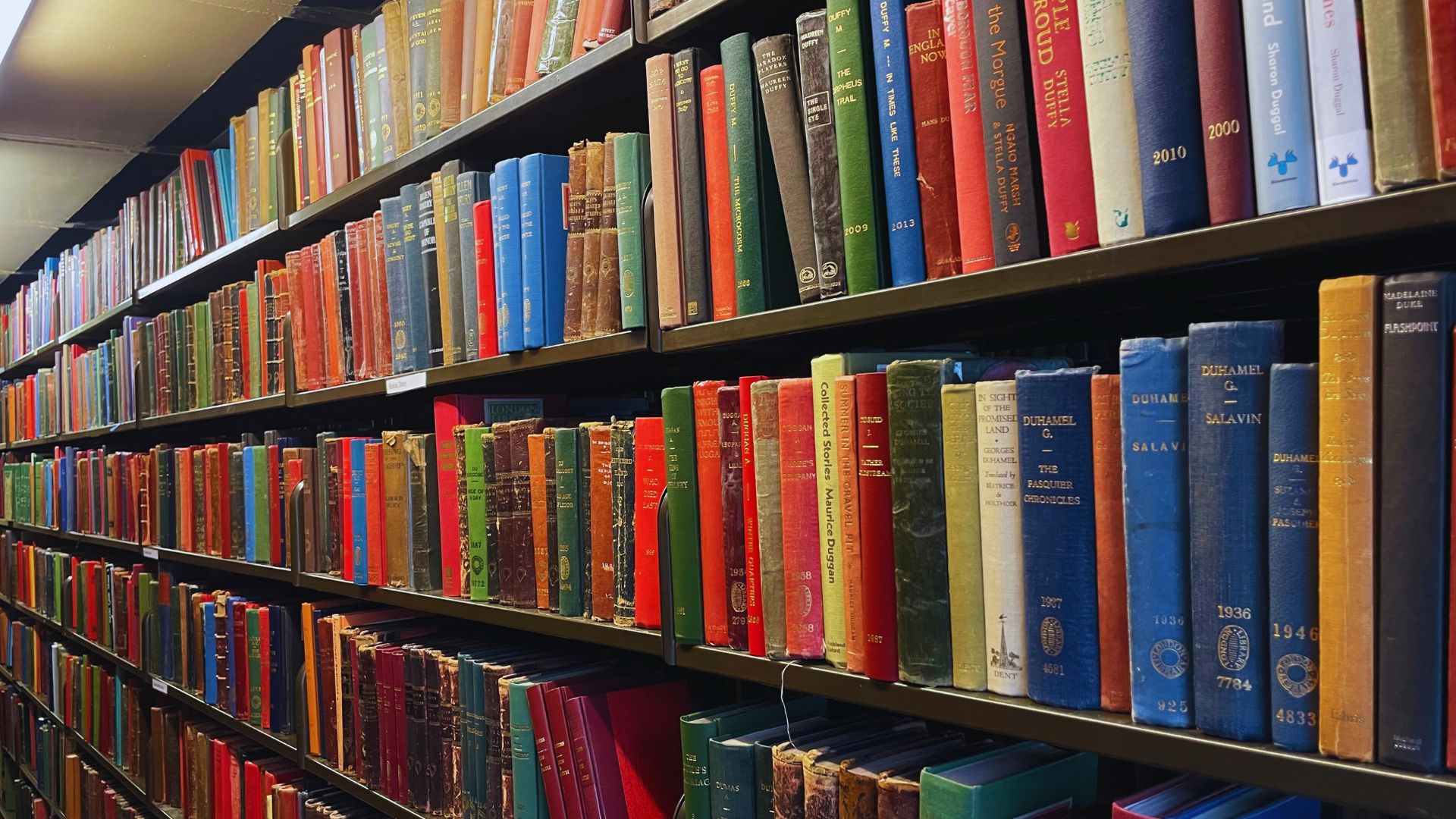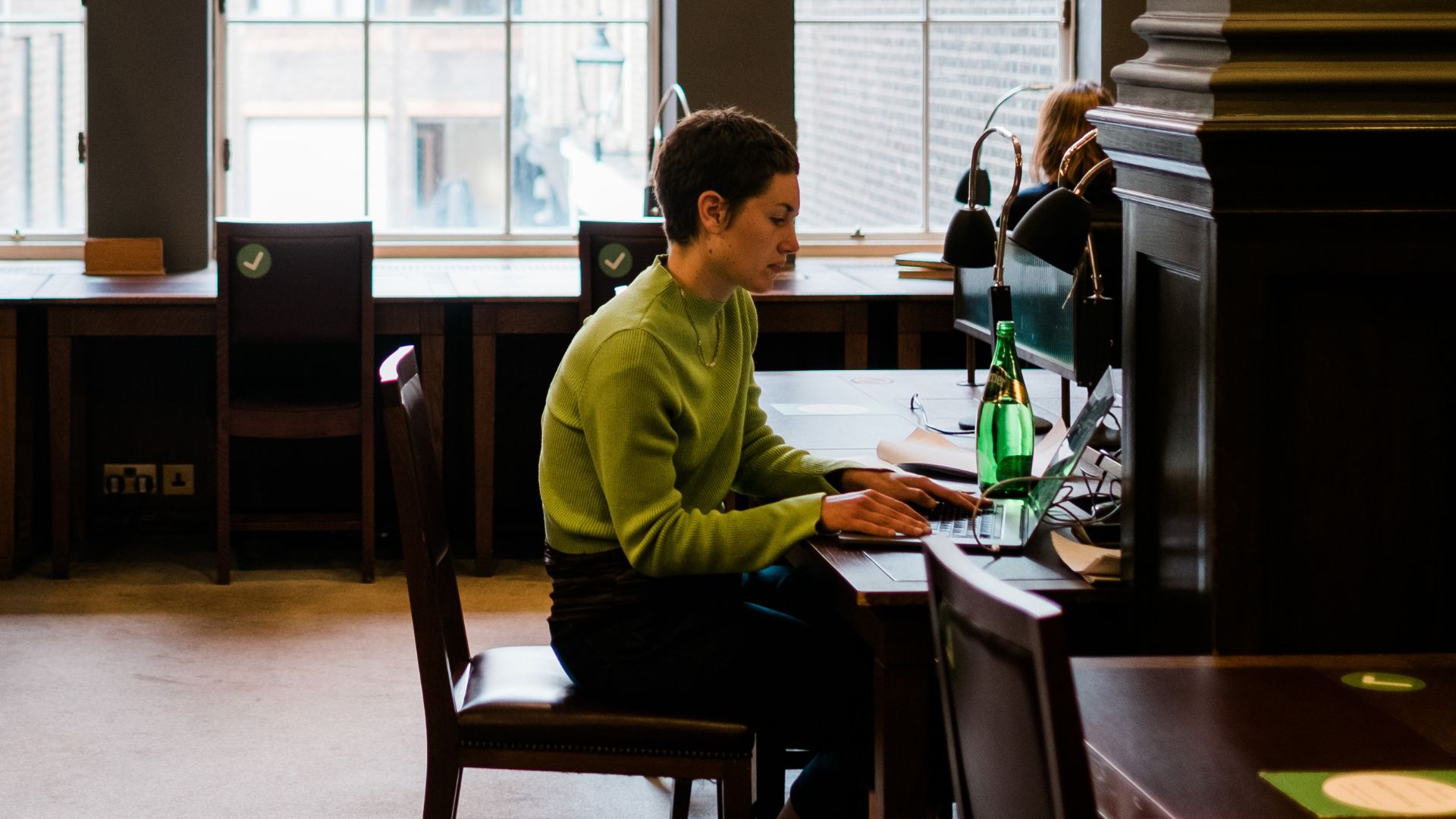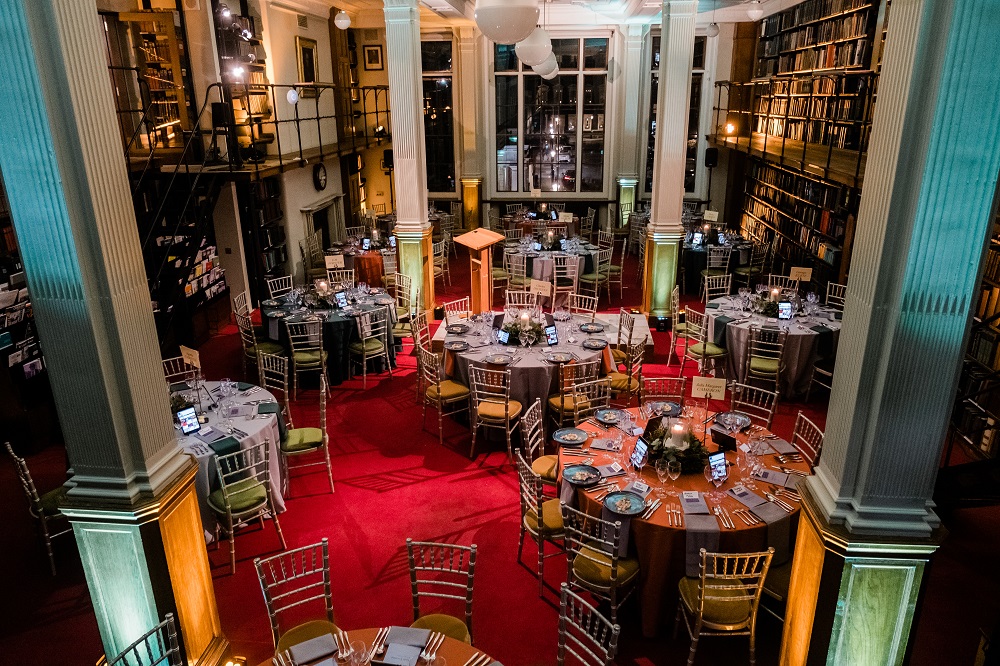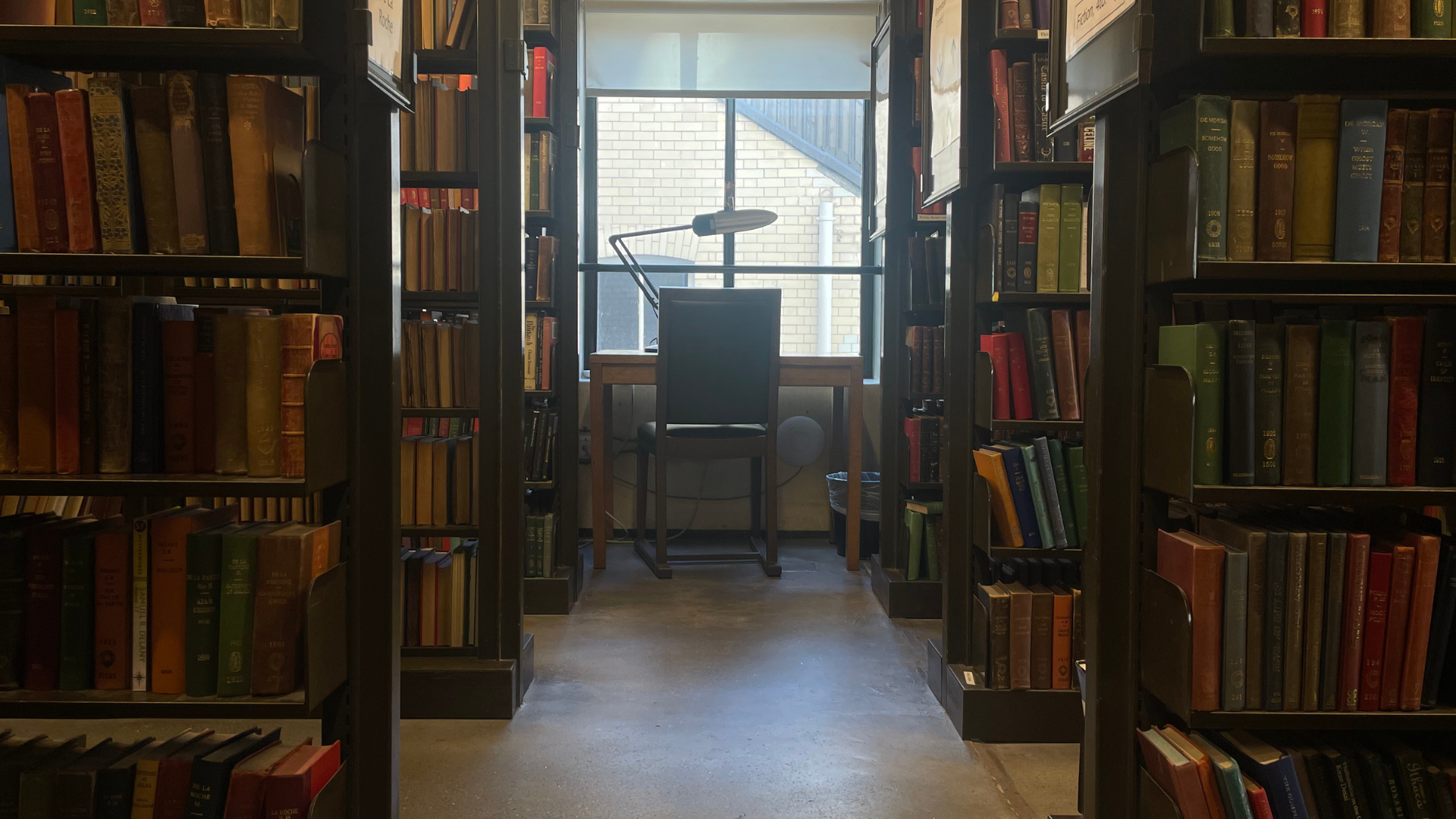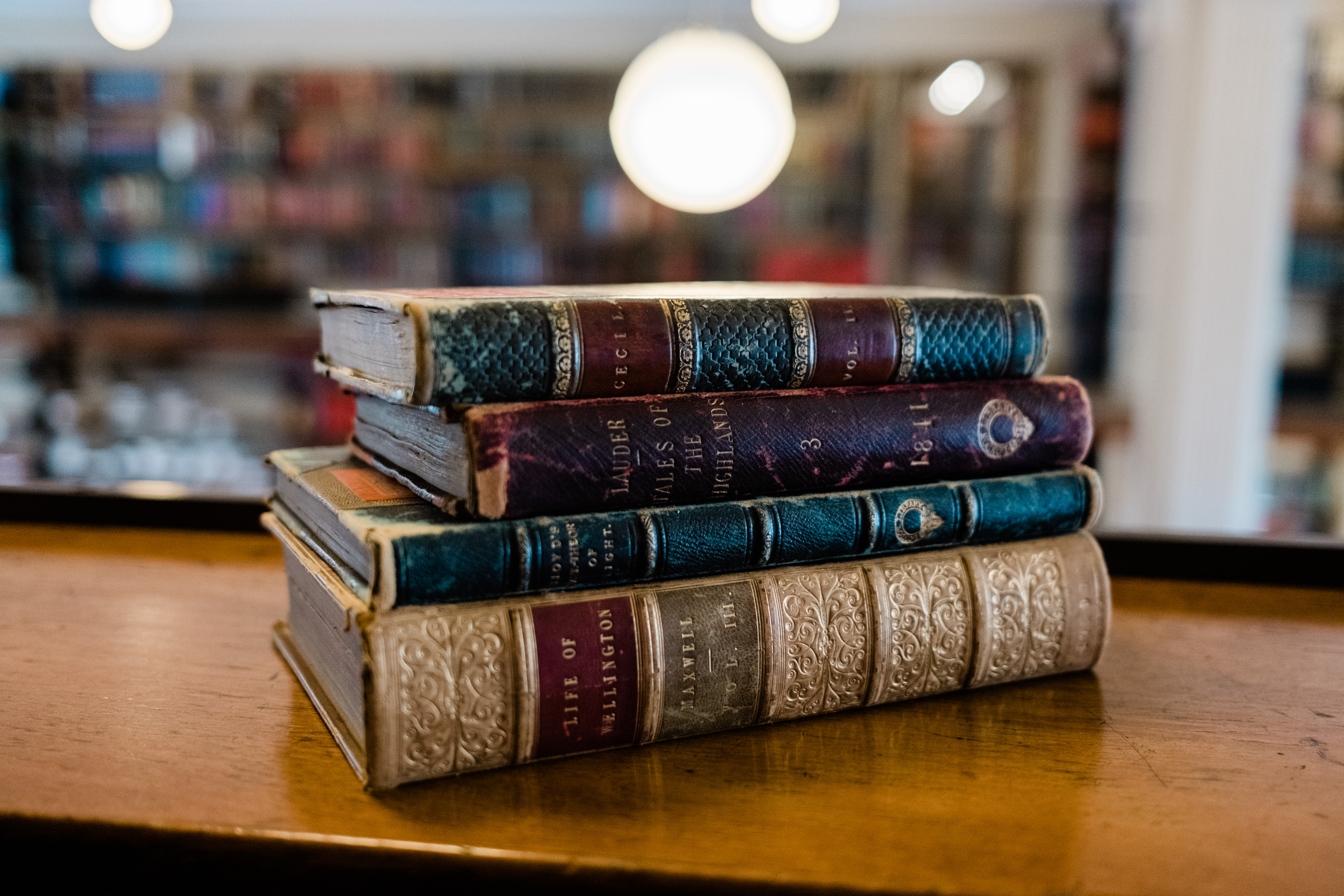In the latest update from her adventures in the Library’s archives, our Head of Reader Services finds some wonderful Pre-Raphaelite connections.
The painter Edward Burne-Jones and the writer, artist and designer William Morris were in the vanguard of the second generation Pre-Raphaelites who clustered round Rossetti. I am currently researching the Pre-Raphaelite network of friends and artistic collaborators evident in the Library’s Victorian membership records and thought I would share with you some of the men and women who painted, designed, etched, stitched, printed, illuminated and mused their way into the archive, and into national life.
Edward Burne-Jones joined the Library in 1867 when he was 34 years old, and he is followed in 1872 by his muse and lover, the sculptor Marie Zambaco. She is the inspiration behind many of his works from the late 1860s onwards. She is the temptress in The Beguiling of Merlin and her unmistakable features adorn the faces of both the male and female protagonists in Phyllis and Demophoon. The psychological subtext of this emotionally revealing work is the traumatic end of their affair, which surfaces less violently, but in equal bleakness, over twenty years later in Love among the Ruins.
In 1870 Phyllis and Demophoon caused outrage not only for its subtext, but for its male nudity which did not sit easily with the Old Watercolour Society who exhibited the work in their Summer Exhibition. The experience triggered Burne-Jones’ resignation from the Society and his withdrawal from exhibiting for the following seven years, but he would become one of the acclaimed figures in the history of British art.
Burne-Jones was a lifelong friend and artistic collaborator of the veritable creative combustion engine that was William Morris. He described Morris as “the greatest master of ornament in the world”. Their friendship began when they were both theology undergraduates and lasted for life. Their final collaboration, for which Burne-Jones provided 87 woodcut illustrations and 116 full page plates, was the Kelmscott Chaucer: an awe inspiring love letter to the codex, or, as Burne-Jones neatly put it, a “pocket cathedral”.
William Morris — writer, artist, craftsman extraordinaire, designer, poet, weaver, embroiderer, printer, entrepreneur and socialist — appears in the published London Library Members List of 1888. He died at the age of 62 from what his doctor diagnosed as simply “being William Morris” – having expended the energy of “ten men” during his lifetime which saw him re-ignite, master and elevate an astounding array of arts and crafts from stained glass to weaving. He was lauded during his lifetime for his literary works, (he was in the running for the Poet Laureateship after Tennyson’s death), but it is his status as the most original and successful designer of the industrial age which is more commonly recognised today. His wallpaper designs, like many significant literary works from this era, are still in print.
Morris had, as ever, several things on the go when he was a member of the Library. In 1885 he published “Chants for Socialists” and over the following two years he was at the heart of political protest in Britain. Between 1884 and 1898 he wrote and published a new genre of prose romances set in imaginary historic landscapes (all still available for loan from the Library’s Fiction shelves) and in 1891 Morris established the Kelmscott Press. Within five years the Press produced an undisputed jewel in British book production in the Kelmscott Chaucer, for which Burne-Jones provided the illustrations, Morris the borders and initial letters. The Kelmscott Chaucer shown here, from the Library’s Special Collections, was bound by the Doves Press in white pigskin with elaborate blind tooling and elegant silver clasps. There is no better indicator of the literary soul of the Pre-Raphaelites than the Kelmscott Chaucer.
I was curious, given Morris’s enormous and varied creative output, to see how his “occupation or position” had been described in the manuscript membership records and when I checked I found a stunner of an archival record (see the image, right). Predating and intertwined with William Morris’ name was the name of one of the most recognisable Pre-Raphaelite women: William’s wife (Rossetti’s lover, muse and collaborator), the exquisite embroiderer Jane Morris.
Dante Gabriel Rossetti drew and painted Jane Morris for over 20 years of his working life. She appears in many guises as Pandora,Proserpine, and Mariana to name just a few, and it was Jane asAstarte Syriaca, painted by Rossetti in 1877, that the Tate used to advertise the glorious “Pre- Raphaelites: Victorian Avante-Garde” exhibition last year. Rossetti also commissioned photographs of Jane in 1865, taken by John Robert Parsons – her staggering beauty is there; so too, and much more striking, her intelligent inner life.
Did Jane join the Library for her own use or did she join on behalf of William or were they both making use of the membership? Why is her name scored through and William’s added to her original record? Did Jane decide to give up her membership but William want to keep it on? Could this be a precursor to an institutional membership where a company registers for membership? It is impossible to say exactly but those two small ticks on the left of the record indicate that both Jane and William at some point were members. It is William’s name only that appears in the published list of 1888, but it is clear that it was Jane, nominated by the process engraver and typographer Emery Walker, who first established the membership.
Emery Walker was a close friend of Jane and William. He joined the Library in 1879 when he was 28 and London Manager of the Typographic Etching Company. His name is revered in the field of typography. His involvement in, and influence on, the Kelmscott, Doves and Ashendene Presses mark him out as one of the most influential and significant people in the history of British book printing and he rose, like Jane from the humblest of beginnings.
After the death of Morris, Emery Walker set up Doves Press with Thomas James Cobden-Sanderson. It was Jane Morris who in 1882 had suggested Cobden-Sanderson take up book binding. A long standing London Library member (he joined in 1864) Cobden-Sanderson donated over 30 Doves Press works to the Library including a beautifully printed and simply bound version of Love in Enough by William Morris. Sanderson’s affection for the Library is clearly evident in his donation inscriptions such this one from 1909: “Presented to the London Library, as to an old friend, by an old member, the printer.”
Over the fire place at Red House is the inscription “Ars Longa Vita Brevis” (Art is long, life is short). The Library’s archival records, like art, are long, and each surviving record illuminates part of the Library’s rich and absorbing cultural heritage.




